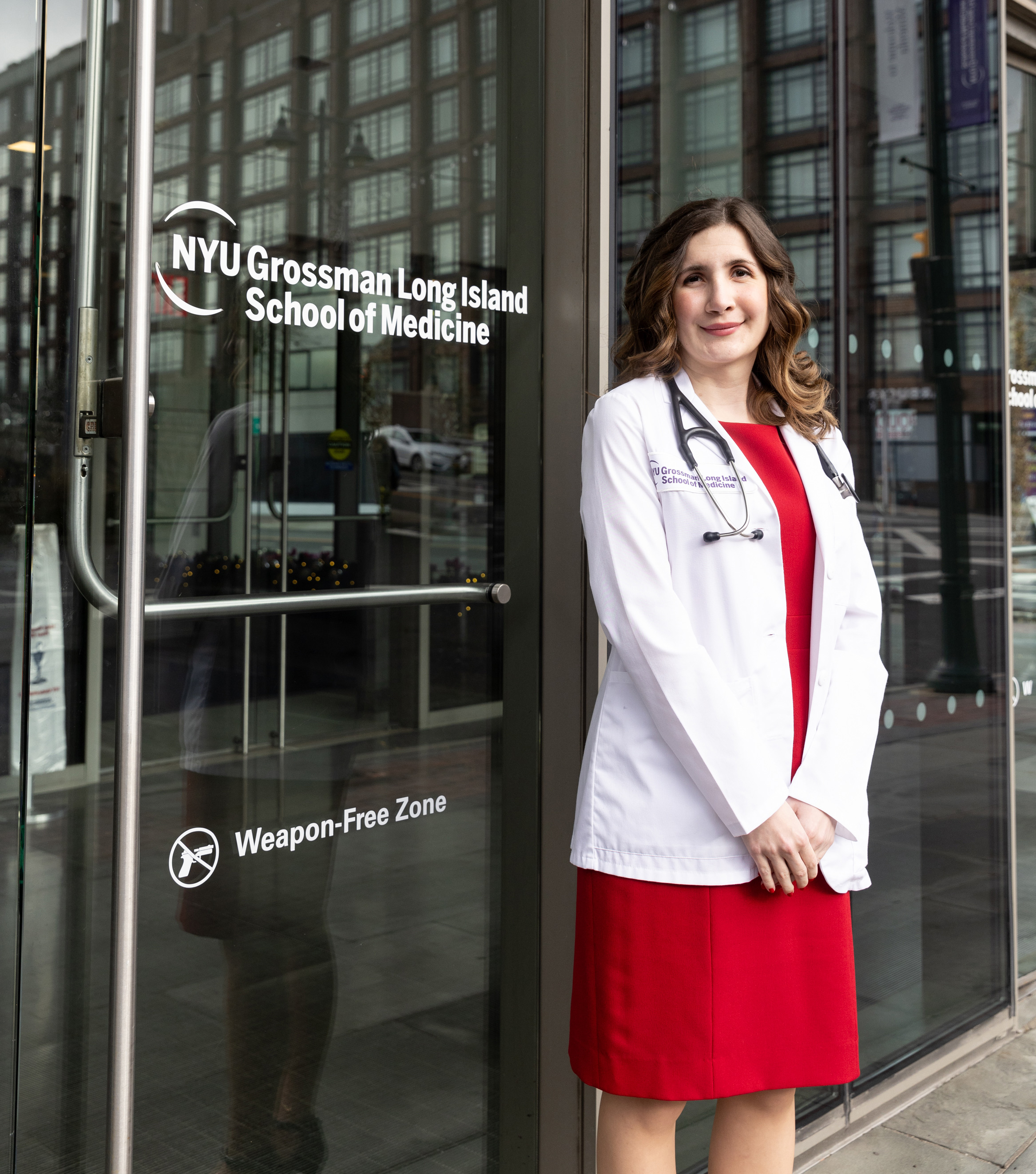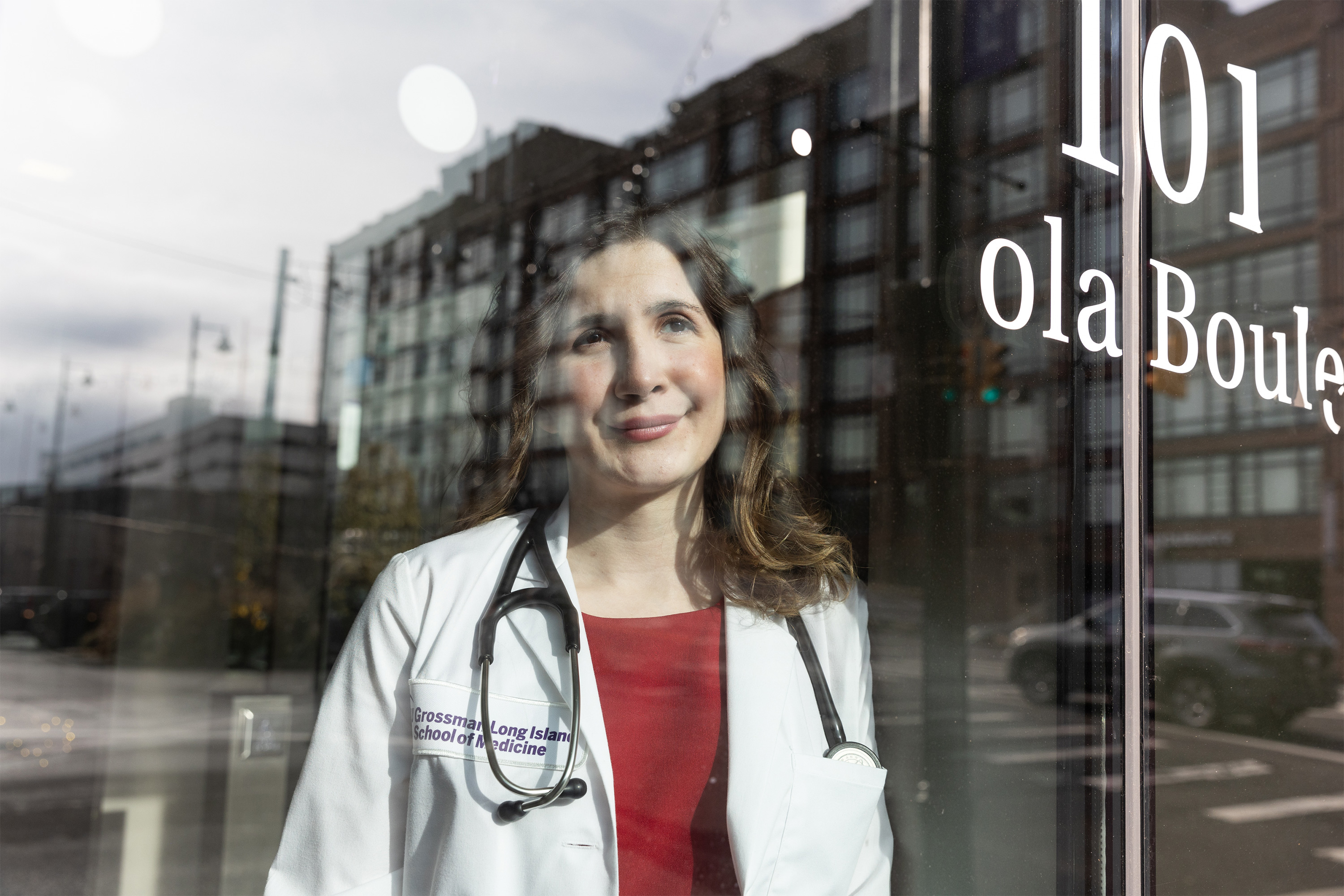All through her childhood, Julia Lo Cascio dreamed of turning into a pediatrician. So, when making use of to medical faculty, she was thrilled to find a brand new, small faculty based particularly to coach main care medical doctors: NYU Grossman Lengthy Island Faculty of Medication.
Now in her remaining yr on the Mineola, New York, faculty, Lo Cascio stays dedicated to main care pediatrics. However many younger medical doctors select in any other case as they go away medical faculty for his or her residencies. In 2024, 252 of the nation’s 3,139 pediatric residency slots went unfilled and household drugs packages confronted 636 vacant residencies out of 5,231 as college students chased higher-paying specialties.
Lo Cascio, 24, stated her three-year accelerated program nurtured her objective of turning into a pediatrician. Might different medical colleges do extra to advertise main care? The query couldn’t be extra pressing. The Affiliation of American Medical Faculties tasks a scarcity of 20,200 to 40,400 main care medical doctors by 2036. This implies many Individuals will lose out on the advantages of main care, which analysis exhibits improves well being, resulting in fewer hospital visits and fewer persistent sickness.
Many medical college students begin out expressing curiosity in main care. Then they find yourself at colleges primarily based in tutorial medical facilities, the place college students change into enthralled by advanced circumstances in hospitals, whereas witnessing little main care.
The driving power is commonly cash, stated Andrew Bazemore, a doctor and a senior vice chairman on the American Board of Household Medication. “Subspecialties tend to generate a lot of wealth, not only for the individual specialists, but for the whole system in the hospital,” he stated.
A division’s cache of federal and pharmaceutical-company grants typically determines its measurement and status, he stated. And no less than 12 medical colleges, together with Harvard, Yale, and Johns Hopkins, don’t even have full-fledged household drugs departments. College students at these colleges can examine inner drugs, however a lot of these graduates find yourself selecting subspecialties like gastroenterology or cardiology.
One potential resolution: remove tuition, within the hope that debt-free college students will base their profession alternative on ardour reasonably than paycheck. In 2024, two elite medical colleges — the Albert Einstein School of Medication and the Johns Hopkins College Faculty of Medication — introduced that charitable donations are enabling them to waive tuition, becoming a member of a handful of different tuition-free colleges.
However the distinction between the varsity Lo Cascio attends and the establishment that based it starkly illustrates the restrictions of this method. Neither expenses tuition.

In 2024, two-thirds of scholars graduating from her Lengthy Island faculty selected residencies in main care. Lo Cascio stated the tutoring waiver wasn’t a deciding think about selecting pediatrics, among the many lowest-paid specialties, with a median annual earnings of $260,000, in accordance with Medscape.
On the sister faculty, the Manhattan-based NYU Grossman Faculty of Medication, nearly all of its 2024 graduates selected specialties like orthopedics (averaging $558,000 a yr) or dermatology ($479,000).
Major care usually will get little respect. Professors and friends alike admonish college students: In the event you’re so good, why would you select main care? Anand Chukka, 27, stated he has heard that chorus recurrently all through his years as a scholar at Harvard Medical Faculty. Even his mother and father, each PhD scientists, puzzled if he was losing his training by pursuing main care.
Seemingly minor points can affect college students’ choices, Chukka stated. He recollects envying the scholars on hospital rotations who routinely have been served lunch, whereas these in main care settings needed to fetch their very own.
Regardless of such headwinds, Chukka, now in his remaining yr, stays passionate about main care. He has lengthy wished to look after poor and different underserved individuals, and a one-year clerkship at a group apply serving low-income sufferers bolstered that plan.
When college students look to the long run, particularly in the event that they haven’t had such publicity, main care can appear grim, burdened with time-consuming administrative duties, corresponding to looking for prior authorizations from insurers and grappling with digital medical data.
Whereas specialists may face forms, main care practices have it a lot worse: They’ve extra sufferers and fewer cash to rent assist amid burgeoning paperwork necessities, stated Caroline Richardson, chair of household drugs at Brown College’s Warren Alpert Medical Faculty.
“It’s not the medical schools that are the problem; it’s the job,” Richardson stated. “The job is too toxic.”
Kevin Grumbach, a professor of household and group drugs on the College of California-San Francisco, spent a long time attempting to spice up the share of scholars selecting main care, solely to conclude: “There’s really very little that we can do in medical school to change people’s career trajectories.”
As a substitute, he stated, the U.S. well being care system should deal with the low pay and lack of assist.
And but, some colleges discover a method to produce important proportions of main care medical doctors — via recruitment and packages that present constructive experiences and mentors.
U.S. Information & World Report just lately ranked 168 medical colleges by the share of graduates who have been working towards main care six to eight years after commencement.
The highest 10 colleges are all osteopathic medical colleges, with 41% to 47% of their college students nonetheless working towards main care. In contrast to allopathic medical colleges, which award MD levels, osteopathic colleges, which award DO levels, have a historical past of specializing in main care and are graduating a rising share of the nation’s main care physicians.
On the backside of the U.S. Information listing is Yale, with 10.7% of its graduates discovering lasting careers in main care. Different elite colleges have comparable charges: Johns Hopkins, 13.1%; Harvard, 13.7%.
In distinction, public universities which have made it a mission to advertise main care have a lot greater numbers.
The College of Washington — No. 18 within the rating, with 36.9% of graduates working in main care — has a decades-old program putting college students in distant components of Washington, Wyoming, Alaska, Montana, and Idaho. UW recruits college students from these areas, and plenty of return to apply there, with greater than 20% of graduates settling in rural communities, in accordance with Joshua Jauregui, assistant dean for scientific curriculum.
Likewise, the College of California-Davis (No. 22, with 36.3% of graduates in main care) elevated the share of scholars selecting household drugs from 12% in 2009 to 18% in 2023, even because it ranks excessive in specialty coaching. Packages corresponding to an accelerated three-year main care “pathway,” which enrolls primarily first-generation faculty college students, assist maintain curiosity in non-specialty medical fields.
The hassle begins with recruitment, trying past take a look at scores to the life experiences that forge the compassionate, humanistic medical doctors most wanted in main care, stated Mark Henderson, affiliate dean for admissions and outreach. A lot of the college students have households who wrestle to get main care, he stated. “So they care a lot about it, and it’s not just an intellectual, abstract sense.”
Establishing colleges devoted to main care, just like the one on Lengthy Island, is just not an answer within the eyes of some advocates, who take into account main care the spine of drugs and never a separate self-discipline. Toyese Oyeyemi Jr., government director of the Social Mission Alliance on the Fitzhugh Mullan Institute of Well being Workforce Fairness, worries that establishing such colleges would possibly let others “off the hook.”
Nonetheless, attending a medical faculty created to provide main care medical doctors labored out effectively for Lo Cascio. Though she underwent the same old specialty rotations, her ardour for pediatrics by no means flagged — owing to her 23 classmates, two mentors, and her first-year clerkship shadowing a group pediatrician. Now, she’s making use of for pediatric residencies.
Lo Cascio additionally has deep private causes: All through her expertise with a congenital coronary heart situation, her pediatrician was a “guiding light.”
“No matter what else has happened in school, in life, in the world, and medically, your pediatrician is the person that you can come back to,” she stated. “What a beautiful opportunity it would be to be that for someone else.”





